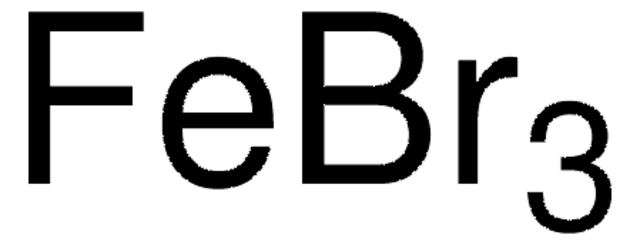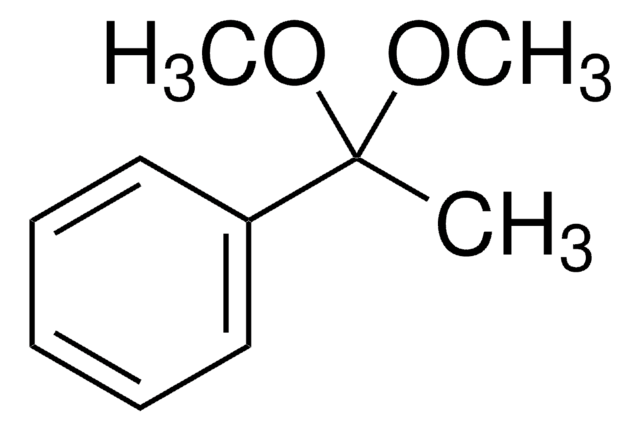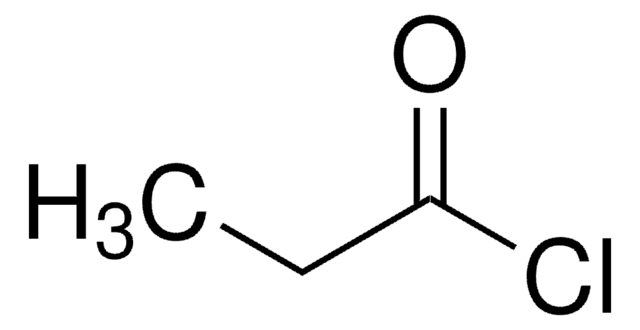451649
Iron(III) chloride
anhydrous, powder, ≥99.99% trace metals basis
Synonyme(s) :
Ferric chloride, Iron trichloride, Molysite
About This Item
Produits recommandés
Qualité
anhydrous
Niveau de qualité
Densité de vapeur
5.61 (vs air)
Pression de vapeur
1 mmHg ( 194 °C)
Pureté
≥99.99% trace metals basis
Forme
powder
Pertinence de la réaction
reagent type: catalyst
core: iron
Caractéristiques du produit alternatif plus écologique
Catalysis
Learn more about the Principles of Green Chemistry.
sustainability
Greener Alternative Product
Impuretés
≤100.0 ppm Trace Metal Analysis
Pf
304 °C (lit.)
Application(s)
battery manufacturing
Autre catégorie plus écologique
, Aligned
Chaîne SMILES
Cl[Fe](Cl)Cl
InChI
1S/3ClH.Fe/h3*1H;/q;;;+3/p-3
Clé InChI
RBTARNINKXHZNM-UHFFFAOYSA-K
Vous recherchez des produits similaires ? Visite Guide de comparaison des produits
Description générale
Application
- As a precursor to fabricate nano-sized Fe-N-C catalysts for proton exchange membrane(PEM) fuel cells. FeCl3 iron precursor, helps to achieve the lowest charge transfer resistance and high peak power density.
- As an oxidant to prepare FeOCl@PPy cathode materials for Li-ion batteries with good cycling stability.
- As a precursor to fabricate amorphous multifunctional am-Fe–Bi/NF electrode for rechargeable Zinc-air batteries.
- To synthesize Fe3O4@nanocellulose/TiCl nano fillers for dye-sensitized solar cells to reduce the crystallinity of the polymer.
À utiliser avec
Mention d'avertissement
Danger
Mentions de danger
Conseils de prudence
Classification des risques
Acute Tox. 4 Oral - Eye Dam. 1 - Met. Corr. 1 - Skin Irrit. 2
Code de la classe de stockage
8B - Non-combustible corrosive hazardous materials
Classe de danger pour l'eau (WGK)
WGK 1
Point d'éclair (°F)
Not applicable
Point d'éclair (°C)
Not applicable
Équipement de protection individuelle
dust mask type N95 (US), Eyeshields, Faceshields, Gloves
Faites votre choix parmi les versions les plus récentes :
Déjà en possession de ce produit ?
Retrouvez la documentation relative aux produits que vous avez récemment achetés dans la Bibliothèque de documents.
Les clients ont également consulté
Articles
Noble-metal nanostructures are widely used in a variety of applications ranging from catalysis to electronics, surface plasmon resonance (SPR), surface-enhanced Raman scattering (SERS), and biomedical research.
Oxidation and reduction reactions are some of the most common transformations encountered in organic synthesis
Lithium-Ion Battery Performance: Dependence on Material Synthesis and Post‑Treatment Methods
We presents an article about a micro review of reversible addition/fragmentation chain transfer (RAFT) polymerization. RAFT (Reversible Addition/Fragmentation Chain Transfer) polymerization is a reversible deactivation radical polymerization (RDRP) and one of the more versatile methods for providing living characteristics to radical polymerization.
Protocoles
Sigma-Aldrich presents an article about RAFT, or Reversible Addition/Fragmentation Chain Transfer, which is a form of living radical polymerization.
We presents an article featuring procedures that describe polymerization of methyl methacrylate and vinyl acetate homopolymers and a block copolymer as performed by researchers at CSIRO.
Sigma-Aldrich presents an article about the typical procedures for polymerizing via ATRP, which demonstrates that in the following two procedures describe two ATRP polymerization reactions as performed by Prof. Dave Hadddleton′s research group at the University of Warwick.
Notre équipe de scientifiques dispose d'une expérience dans tous les secteurs de la recherche, notamment en sciences de la vie, science des matériaux, synthèse chimique, chromatographie, analyse et dans de nombreux autres domaines..
Contacter notre Service technique








